Ryan Hall's Blog, page 294
February 2, 2016
Don’t Call It A Comeback: Kara Goucher Has Her Eyes on the Prize
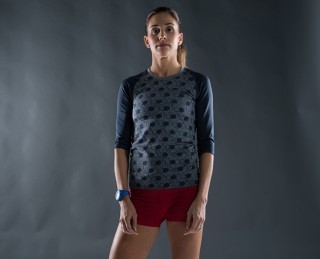
With almost a full year of uninterrupted training under her belt, Kara Goucher is fit, focused and ready to race in the U.S. Olympic Trials on Feb. 13 in Los Angeles. Photo: James Carney
Kara Goucher went through some big changes, testified against her former coach for unethical practices and suffered a few setbacks and injuries, but she never lost the desire to run. Now, ahead of the 2016 U.S. Olympic Trials Marathon on Feb. 13 in Los Angeles, the 37-year-old Goucher is fit, focused and running with a huge sense of purpose.
A little more than 15 months ago, Kara Goucher knew she had to ask a hard question and brace herself for an answer that she didn’t want to really hear.
She had just finished 14th in the 2014 New York City Marathon in a disappointing time of 2:37:04, by far the slowest of her career. While there were a lot of factors that went into that unsatisfying effort—relentless wind, some overly aggressive racing tactics and not-quite-optimal fitness compared to the rest of the field—it was an experience so humbling that she knew she had to come to a point where she had to make sure she was being honest with herself.
So, sitting with coach Mark Wetmore in a quiet New York hotel room and talking to her other coach, Heather Burroughs, on speaker phone from Boulder, Colo., Kara spoke bluntly as tears welled up in her eyes.
“I just want you to tell me if I’m fooling myself. Am I done?” she asked. “I’ve had a great career, and I can walk away from it. I don’t want to be that person who thinks they have something more to give and they don’t. I just want you guys to tell me …”
There was a short silence but, at the time, it seemed like an eternity as her entire career flashed before her eyes.
Goucher had been contemplating her future as a runner a lot in the weeks preceding that self-prescribed face-the-music-moment, but in a very optimistic way. She had turned in a credible 1:11:39 effort at the Rock ‘n’ Roll Philadelphia Half Marathon six weeks earlier and was excited to run her first marathon in 18 months. Realistically, she knew she wasn’t prepared to stay with the leaders deep into the race, but she and her coaches thought she could run in the 2:28-2:30 range.
She was actually ahead of that pace early and then backed off slightly, only to find herself running alone amid the howling winds. When things go wrong in a race, no one is immune from self-doubt and loathing—not even Kara Goucher. She’s as human as the rest of us, and, she admits, probably more sensitive than most. She forged ahead, but running alone proved to be a huge challenge.
And so the sting of not living up to expectations—both her own and those of her coaches—hurt deeply that day as a talented field ran away from her midway through the race. Although she had endured a few less-than-stellar races in her career, no moment was as frustrating or poignant as when she hit the wall at mile 22 and had to swallow her pride and struggle with all of her might just to finish the final 4 miles of the race, all amid the clamor of thousands of cheering fans in Central Park.
“Certainly after the 2014 New York City Marathon, nobody would have given Kara much of a chance,” Wetmore said recently.
RELATED: 2016 U.S. Olympic Trials Marathons on NBC
The post Don’t Call It A Comeback: Kara Goucher Has Her Eyes on the Prize appeared first on Competitor.com.
Brother and Sister to Make Olympic Trials Marathon History in L.A.
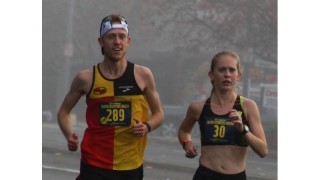
Brendan Gregg and Kaitlin Gregg Goodman running the 2014 California International Marathon (photo by Carolee Gregg, used with permission)
(c) 2016 Race Results Weekly, all rights reserved. Used with permission.
A brother and sister from Davis, Calif., are set to make history in Los Angeles on February 13, at the USA Olympic Trials Marathon regardless of the outcome of the race. Brendan Gregg and Kaitlin Gregg Goodman will be the first brother and sister to compete in the Trials Marathon on the same day, and only the second brother and sister to compete in the Trials in the same four-year Olympic cycle since Tom and Debbie Raunig in 1984.
That a brother and sister haven’t competed in the Trials in the same Olympic cycle in 32 years is remarkable given the number of other athletes with family ties who have. Race Results Weekly examined the results of previous Trials and checked with several running historians and found that although sisters had competed on at least three occasions, brothers on at least four, and spouses at least twice, there hasn’t been a brother and a sister since 1984, the year the International Olympic Committee added the women’s marathon to the Olympic program. Although seemingly less likely, at least four sets of twins have raced the trials: Jeanne and Karen Peterson (1996 and 2000), Kara and Tara Storage (2012), Casey and Patrick Moulton (2008), and Drew and Kyle Shackleton (2012).
“It’s definitely a cool thing,” mused Brendan Gregg who was joined by his sister in a recent telephone interview with Race Results Weekly.
RELATED: Olympic Trials Marathon Field Will Include Two Married Couples
Growing up in Davis, both Brendan, now 26, and Kaitlin, 29, ran in high school where they were coached by their father, Bill Gregg, himself a runner who competed for the University of California at Davis. Like her father, Kaitlin chose UC-Davis for her NCAA career, where she studied economics and international relations, graduating in 2010. Brendan went to Stanford in Palo Alto, Calif., graduating in 2012. Both athletes did a fifth year so they could use all of their NCAA eligibility.
Kaitlin had hoped to compete in the 2012 U.S. Olympic Trials in Eugene at 10,000m, but the 33:01.03 mark she posted ahead of the Trials wasn’t good enough to gain acceptance to the meet. Four years earlier, she and Brendan drove from Davis to Eugene, Ore., to watch the Trials at the University of Oregon. They were enthralled.
“The Trials has been a goal for both of us going all the way back to 2008,” Kaitlin said. “We road-tripped up to Eugene to watch the Track Trials in ’08. At least for me, the goal of getting to the Trials was planted for me.”
After college Kaitlin moved several times with fiancé Avi Goodman—an orthopedic surgery resident and now her husband—before settling in Providence, R.I., where Avi works at Brown University. However, she still goes to California for training stints, where she works with coach Dena Evans. She and Evans decided late in 2013 that Kaitlin should try the marathon as a way to move her stalled running career forward.
“Fall of 2013 I was at a crisis with my running,” Kaitlin explained. “I had moved to Ohio following my husband’s career. I was either going to hang up my shoes or go to another event. I talked to Dena and we said we’d give it another shot.”
She targeted the California International Marathon in Sacramento in December, 2014, both because it was close to Davis, and also for its reliable weather and gently downhill course. Both athlete and coach were comfortable that the then “B” standard of 2:43:00 (later softened to 2:45:00) was well within reach, but that the “A” standard of 2:37 might be possible on race day. Athletes with the “A” standard get their expenses paid for the Trials.
Meanwhile, Brendan had joined the Michigan-based Hansons Brooks Original Distance Project, run by brothers Kevin and Keith Hanson. Athletes from that group were also planning to run Cal International. Brendan, by virtue of his 1:03:35 half-marathon in Richmond, Va., in 2013, had already qualified for the Trials (1:05 or better is a “B” qualifier for the men). He was asked by another Hansons Brooks athlete, Clint Verran, if he would pace him for about 25 kilometers, and he agreed.
“I went through 16 (miles) helping out Clint Verran,” Brendan said. “We were going after the 2:18 mark.” (The original “B” qualifying time was 2:18 but was later later softened to 2:19:00.)
But since Kaitlin was also running, Brendan realized that he could also help her. He made a plan to slow down after pacing Verran, then pick up Kaitlin and try to run with her through 20 miles.
“I just jogged around waiting for Kaitlin,” Brendan recalled, who was able to get her through about 20 miles before stepping off the course and heading for a parked car with Coach Evans to drive to the finish. Kaitlin also got help from her parents and other family members who had come out to cheer. Loudly.
“There was lots of enthusiastic cheering,” Kaitlin said with pride. “They were like out in the street, really yelling. They were out in full force. I really respond to the crowd, especially to your family appearing. It was really special that they were at the finish line.”
Kaitlin clocked 2:39:29 easily qualifying for the Trials, and that remains her only marathon. During 2015, she and Coach Evans worked on her speed and racing acumen with good results. She placed a surprising third in the 10,000m at the Stanford Invitational in Palo Alto, Calif., last April, dropping her personal best to an international class 32:09.82. That mark shows that she has sub-2:31 marathon potential.
Moreover, Kaitlin has been working on her racing skills, trying to hone her competitive instincts and to reduce her dependence on the clock. She said that will be essential for success in a head-to-head race like the Trials where place matters far more than time.
“I’d love to run a really fast time, but that’s not the main objective of an Olympic Trials championships race,” Kaitlin said. “I want to put myself in a a place to compete; run smart through 20 miles, then see what happens. I’m hoping to use skills from cross country, and approach it like a cross country race. Just put myself in it with the pack.”
Brendan, who lives in Davis now with his wife, Jonah, has different near-term goals than Kaitlin. Speaking from a training camp with the Hansons Brooks group near Orlando, Fla., he said he plans to focus on helping his teammates in Los Angeles because a sacral stress fracture he suffered last fall has hampered his training. He’s trying to take the long view now.
“For L.A., to be totally honest, we’re keeping the focus on track (season) with the injuries this fall,” admitted Brendan. “Definitely give it a shot and see what I can do and use that to build for 2020. Long term is the goal.” He continued: “Yeah, that’s the plan. Just taking it day by day now.”
Both Brendan and Kaitlin can count on strong family support in Los Angeles. Their parents plan to come and cheer, as well as their spouses, and younger brother Bryce, a high school freshman in Davis. Their younger sister, Kallie, is studying in Spain and cannot attend (she’ll be following the race via Twitter from Barcelona, Kaitlin said).
Both father Bill and brother Bryson have been helping Kaitlin train for the Trials while she’s been in California. She said that she’s grateful for their support, especially because she’s away from her regular training partners in Providence.
“He and my dad are on the bike,” Kaitlin said proudly. She added of Bryce: “He’s doing a bunch of my second runs with me.”
RELATED: Competitor’s Coverage of the 2016 U.S. Olympic Trials
The post Brother and Sister to Make Olympic Trials Marathon History in L.A. appeared first on Competitor.com.
How to (Finally) Run More Consistently

Is this going to be your year for achieving all of your running goals?
If so, consistency is going to be crucial in helping you succeed. And as I’m fond of saying, consistency is the “secret sauce” to successful running. If you want to run faster, you must run more consistently.
But it’s not always so easy. We all have commitments and demands on our time: family, work, errands and a social life are just a few of the many areas in our life that compete with running.
So how do we find the time to run? And more importantly, how do we become the type of runner that almost always gets in their workout—no matter what?
The secret lies in understanding how to overcome the many obstacles to consistency—and building systems that make running regularly a lot easier.
Step 1: Recognize the Obstacles to Consistent Running
The biggest mistake most runners make is relying on willpower to build new habits or build upon existing habits. The truth is that willpower is not enough. Like motivation, it’s fleeting and unreliable.
In fact, one interesting study showed that willpower is a finite resource that gets depleted the more decisions you make. So if you’re planning to run after a hectic day at work, that decision doesn’t stand a chance! The allure of a home-cooked meal, warm bed or a glass of wine might be too much for you to resist.
Know your personal energy levels and don’t set yourself up for failure by relying on willpower when you know you’re likely to skip a run.
Additionally, runners often try to jumpstart a consistent running streak by attempting a “hail mary”or trying to make huge gains in a relatively short period of time.
You’ll recognize these types of runners. They’re the ones who jump from 10 miles per week to 30 miles. Or they register for 5 races in a single month thinking that races looming on the horizon will somehow convince them to run more consistently.
And for a time, it works! Drastically changing any routine is exciting and makes you feel like you’re progressing quickly.
But soon, these runners will suffer a running injury. Or they simply can’t sustain that level of training. Motivation fades along with their hopes of consistency.
Simply recognizing these barriers to running consistently for long periods of time will help you avoid them. But that’s only half the puzzle.
The post How to (Finally) Run More Consistently appeared first on Competitor.com.
February 1, 2016
Photos: Clever Runners Use Strava to Create Art

The workout-tracking app Strava has its share of creative endurance athletes—and here’s the proof.
Whether it’s a tribute to the Boston Marathon, the city of Paris, Halloween or just a certain style of facial hair, take a look at what Strava users are “drawing” through their running:
Photo Gallery
1 of {count}
Back to Start
View Larger Image
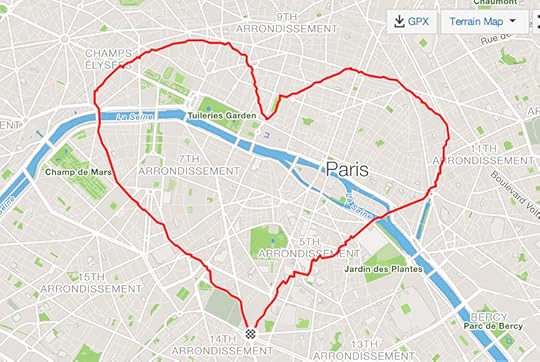
A love note to Paris, run by Florian Tolle.
View Larger Image
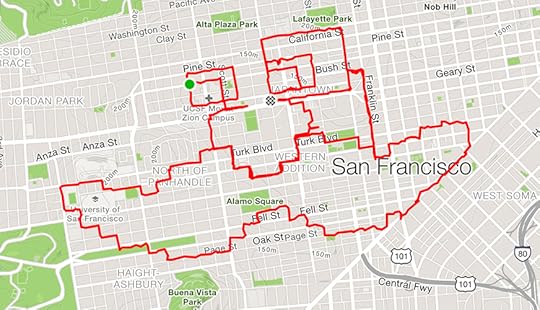
An ode to the mustache, run by David Miller.
View Larger Image
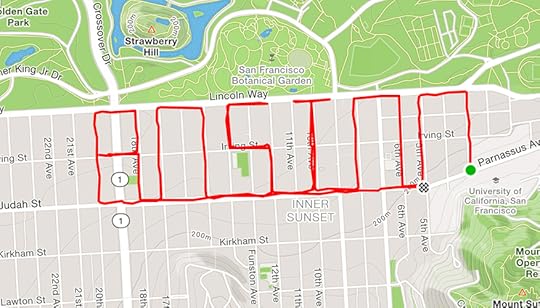
A tribute to Boston, by Jenni Kirk.
View Larger Image
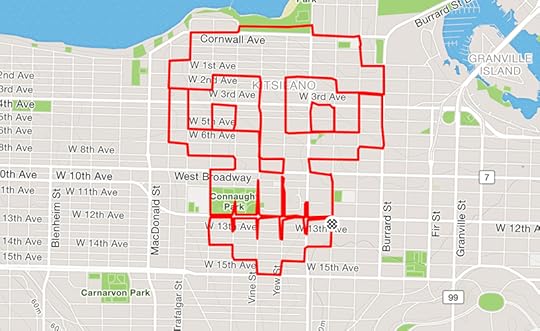
In celebration of Halloween, by David Papineau.
View Larger Image
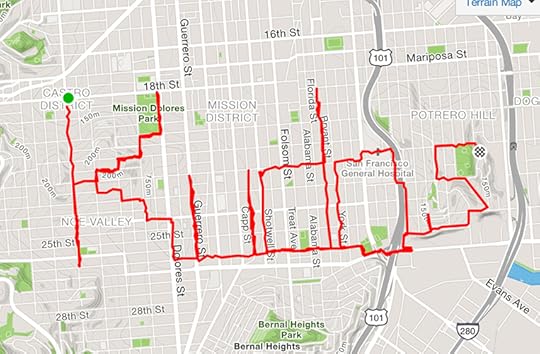
A little congratulations courtesy of Evelyn Cordner
View Larger Image
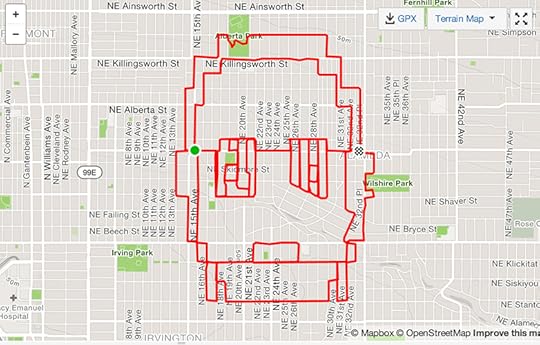
C3PO of Star Wars fame, by Gene Lu.
View Larger Image
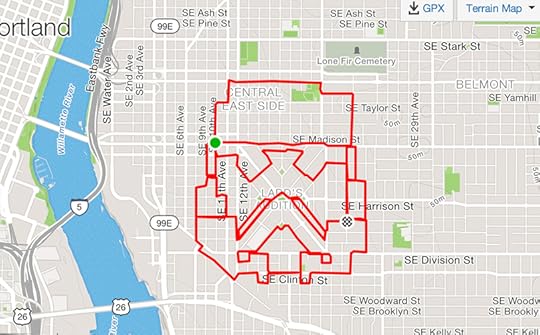
A Star Wars stormtrooper, also by Gene Lu.

More Galleries
The post Photos: Clever Runners Use Strava to Create Art appeared first on Competitor.com.
Top Contenders Withdraw From U.S. Olympic Trials Marathon
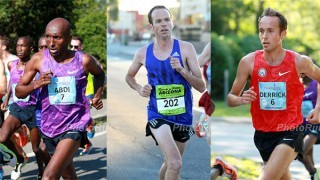
Abdi Abdirahman (left), Aaron Braun and Chris Derrick will not race in Los Angeles. Photos: PhotoRun.net
With less than two weeks to go until the U.S. Olympic Trials in Los Angeles on Feb. 13, a few top contenders have recently announced they won’t be running in the race due to injury and other circumstances.
The most recent scratch is four-time Olympian Abdi Abdirahman, the third-place finisher at the 2012 Trials in Houston, whose agent, Ray Flynn, told Sports Illustrated on Monday that “Abdi had a setback in training recently that has prevented him from training properly for 10 days and has made the difficult decision that he will not be ready for the marathon trials.” The 39-year-old Abdirahman recently dropped out of the Rock ‘n’ Roll Arizona Half Marathon on Jan. 17. He was there to pace to Olympic Trials hopefuls to a sub-65-minute qualifying time. Flynn said that if Abdirahman can get healthy it’s possible he’ll run a spring marathon. Abdirahman’s absence, along with Ryan Hall’s recent retirement, means that 40-year-old Meb Keflezighi is the only remaining member of the 2012 U.S. Olympic Marathon team taking part in this year’s Trials race.
Last week, three-time U.S. cross-country champion Chris Derrick, who was to making his marathon debut at the Trials, announced that a setback in training had derailed his upcoming racing plans. “After dealing with a setback and missing some training in an already short build up, Jerry and I have decided to not pursue the OT marathon,” Derrick Tweeted. “I’m very excited about my future in the marathon, but right now it makes the most sense to focus on the upcoming track season.”
Finally, Aaron Braun, a six-time national champion whose 2:12:54 marathon personal best put him amongst the top contenders for this year’s Trials race, Tweeted on Jan. 26 that an injury was going to keep him off the starting line in L.A. “I’m sad to announce, due to lingering groin/hip injury and consequential lack of fitness, I will not be competing in #LA2016 marathon trials.” In Braun’s case, not racing the Trials at least relieves some of the pressure of knowing he’ll be home on Feb. 12—his wife’s due date for the birth of their second child.
RELATED: Olympian Matt Tegenkamp Announces Retirement From Professional Running
RELATED: Competitor’s complete coverage of the 2016 Olympic Trials
The post Top Contenders Withdraw From U.S. Olympic Trials Marathon appeared first on Competitor.com.
Top Contenders Withdraw From Olympic Trials Marathon

Abdi Abdirahman (left), Aaron Braun and Chris Derrick will not race in Los Angeles. Photos: PhotoRun.net
With less than two weeks to go until the U.S. Olympic Trials in Los Angeles on Feb. 13, a few top contenders have recently announced they won’t be running in the race due to injury and other circumstances.
The most recent scratch is four-time Olympian Abdi Abdirahman, the third-place finisher at the 2012 Trials in Houston, whose agent, Ray Flynn, told Sports Illustrated on Monday that “Abdi had a setback in training recently that has prevented him from training properly for 10 days and has made the difficult decision that he will not be ready for the marathon trials.” The 39-year-old Abdirahman recently dropped out of the Rock ‘n’ Roll Arizona Half Marathon on Jan. 17. He was there to pace to Olympic Trials hopefuls to a sub-65-minute qualifying time. Flynn said that if Abdirahman can get healthy it’s possible he’ll run a spring marathon. Abdirahman’s absence, along with Ryan Hall’s recent retirement, means that 40-year-old Meb Keflezighi is the only remaining member of the 2012 U.S. Olympic Marathon team taking part in this year’s Trials race.
Last week, three-time U.S. cross-country champion Chris Derrick, who was to making his marathon debut at the Trials, announced that a setback in training had derailed his upcoming racing plans. “After dealing with a setback and missing some training in an already short build up, Jerry and I have decided to not pursue the OT marathon,” Derrick Tweeted. “I’m very excited about my future in the marathon, but right now it makes the most sense to focus on the upcoming track season.”
Finally, Aaron Braun, a six-time national champion whose 2:12:54 marathon personal best put him amongst the top contenders for this year’s Trials race, Tweeted on Jan. 26 that an injury was going to keep him off the starting line in L.A. “I’m sad to announce, due to lingering groin/hip injury and consequential lack of fitness, I will not be competing in #LA2016 marathon trials.” In Braun’s case, not racing the Trials at least relieves some of the pressure of knowing he’ll be home on Feb. 12—his wife’s due date for the birth of their second child.
RELATED: Olympian Matt Tegenkamp Announces Retirement From Professional Running
RELATED: Competitor’s complete coverage of the 2016 Olympic Trials
The post Top Contenders Withdraw From Olympic Trials Marathon appeared first on Competitor.com.
Olympian Matt Tegenkamp Announces Retirement From Professional Running
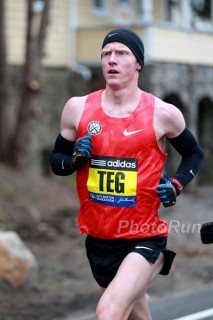
Tegenkamp, pictured here en route to finishing 11th at the Boston Marathon in April, was one of the most versatile long-distance runners in the U.S. Photo: PhotoRun.net
Matt Tegenkamp, two-time U.S. Olympian and thrice a member of U.S. national teams at world championships, announced his retirement from professional running on Monday.
“Throughout my career, I lived 24/7, 365 days a year as an athlete,” Tegenkamp said on KIMbia Athletics’ website. “When I started the real build-up last fall for the marathon trials, I realized I wasn’t willing to live like that anymore. I wasn’t fully vested, and that’s not what my career has been about.”
Tegenkamp’s announcement comes less than two weeks from the U.S. Olympic Trials Marathon in Los Angeles, where he was slated to compete. The 34-year-old, who trained under Jerry Schumacher and the Nike Bowerman Track Club, was taking a 2:12:28 marathon personal best to the trials, along with three national road racing titles (5K, 10K and 20K) and personal bests of of 3:34.25 for 1500 meters, 12:58.56 for 5,000 meters and 27:28.22 for 10,000 meters—perhaps the most impressive range of any long-distance runner in the U.S. Tegenkamp’s announcement comes two weeks after fellow two-time Olympian Ryan Hall said he was retiring from the sport.
“Being a part of getting American distance running back on the map is definitely tops for me,” Tegenkamp said. “It started with mentors like Bob Kennedy and Pascal Dobert, but from my youth, being at the start of finding our limit again and seeing how far we could push ourselves and getting the best out of ourselves, that was great. With Ryan Hall, Alan Webb, Dathan Ritzenhein, we were breaking down barriers, and it was fun to be part of that over a period of 10 to 15 years.”
Tegenkamp, a Lee’s Summit, Mo., native, won’t have to look far for ways to fill his free time. He is working full-time in product creation for his longtime sponsor, Nike, at the company’s headquarter’s in Beaverton, Ore. “I won’t miss being away from my family while at altitude camp, or while being away at races,” Tegenkamp says. “Now on weekends, I look forward to long hikes, or sledding with the kids, or building sand castles at the beach, and that’s great.”
The post Olympian Matt Tegenkamp Announces Retirement From Professional Running appeared first on Competitor.com.
Ultrarunner Sells Not-So-Coveted Western States 100 Finisher’s Buckle
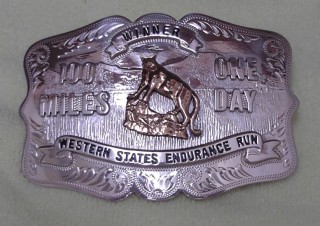
How much would you pay for a finisher's buckle earned by someone else? Photo: Facebook
Over the past few years, Jared Hazen has established himself as one of the top young ultrarunners in the U.S. The 20-year-old Colorado Springs-based runner has done it with plenty of hard work, ambition and, of course, sometimes a rather unconventional approach to everything.
On Jan. 24, he put one of his silver sub-24-hour Western States 100-Mile Endurance Run finisher buckles up for sale on eBay. Bidding started at $100 and a week later when bidding ended on Jan. 31, the highest bid that claimed the buckle put $519.09 in Hazen’s pocket. Hazen says he knows who bought the buckle but the new owner wants to keep it confidential because he’s giving it to a friend who had previously given away his own finisher’s buckle.
While that has rubbed plenty of ultrarunners the wrong way, beauty is in the eyes of the beholder and Hazen admits he’s not attached to inanimate objects.
Hazen has always blazed his own trail. As a senior in high school in the spring of 2012, the native of Titusville, Pa., took the bold step of putting off college to focus on his upstart ultrarunning career and later that summer placed second in his first 50-mile run. Immediately after graduating from high school, he moved to Jackson, Wyo., to focus on training while working as a housekeeper at Grand Teton National Park. The follow year, when he was still just 18, he won Pennsylvania’s Oil Creek 100 in 19 hours, 28 minutes and 8 seconds.
In 2004, after moving to Colorado Springs, he placed 14th in the Western States 100 (17:29:59) and placed in the top three of several other ultra-distance races throughout the West. Last year, he recorded third-place showings in three of the country’s most competitive ultra races: the Bandera 100K (8:47:55) in January, the Lake Sonoma 50-miler (6:31:54) in April and the Western States 100 (15:37:31) in June. He also placed sixth at the Pikes Peak Marathon (4:15:15).
Hazen, who works part-time at a running shop, says he doesn’t need money, or at least that’s not why he sold the buckle. He’s not independently wealthy, but he says he isn’t attached to the buckle that was otherwise just stashed in a drawer.
“Selling the buckle is partly a joke. I’m really curious to see if anyone will pay 100 bucks for it. It’s been sitting in its box ever since I got it and it doesn’t mean anything to me, besides I’ve got another one!” Hazen said in a Facebook post on Jan. 24. “That being said I hope it sells. I don’t see what’s so important about a belt buckle. Who knows, someone else may appreciate it more than me. Plus, who doesn’t want an extra hundred bucks!”
Selling off race medals earned through hard-to-enter races is not a new trend. Dozens of Boston Marathon finisher medals have popped up on various auction sites in recent years. As of this week, someone has put a finisher’s medal from the 100th anniversary Boston Marathon in 1996 on eBay with a starting bid of $199.
The Western States buckle Hazen sold was reportedly the one from his 14th-place finish in 2014. The sub-24-hour buckles are worth about $375, according to a story in the Sacramento Bee newspaper.
Understandably, Hazen received his fair share of abuse on social media—many who thought Hazen’s intention to sell his buckles was an insult to the thousands of ultrarunners who hope to one day earn one—as well as plenty of people who were concerned that Hazen was in dire straits and needed money.
“I appreciate the concern guys, buts its staying up until it (hopefully) sells,” he wrote. “I don’t need the 100 bucks. The way I look at it, once you earn the buckle its yours to do what you want with it.”
RELATED: Generation Next—America’s Fastest Young Runners
Although a handful of Facebook posters applauded his efforts, many thought his attitude was a bit nonchalant. In his blog post from Jan. 31, Scott Dunlap estimates the value is only about $110, after you subtract the $410 entry fee Hazen paid and worth much less than the $519 the winning eBay bidder paid for it.
“What we are really talking about is the price of a ‘unearned’ buckle, the equivalent of a Louis Vuitton replica handbag. It denies all the emotional value of pursuing and finishing the challenge for which it was forged, similar to how a knock off does not achieve the satisfaction of being so wealthy you can disconnect from reality and spend ten grand on a fucking handbag,” Dunlap wrote. “Owning an unearned buckle might SAY what you want, but it actually MEANS nothing. What Jared has actually shown us is little more than the value of hubris. Turns out, it’s not worth much at all.”
The post Ultrarunner Sells Not-So-Coveted Western States 100 Finisher’s Buckle appeared first on Competitor.com.
Why Women’s Apparel Companies Are On The Rise
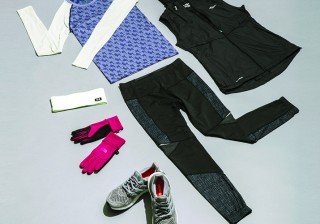
I already own nine pairs of running tights, yet I bought two more last week. I wear them constantly: to run, to strength train, to sit on the couch. In fact, I’m wearing a pair right now as I type. If national trends are any indication, there are millions of other women just like me; athletic clothing companies are counting on it.
While the overall market for athletic apparel was up slightly this past year, according to Andy Annunziata, an analyst with SportsOneSource, the highest growth was in women’s activewear, which is now a $20 billion business annually. The biggest selling item by far? Tights.
“Maybe the demand was there in the past, but the supply wasn’t,” Annunziata says.
Once overlooked, women’s athletic wear is now a large enough business that everyone wants a piece of it. Nike has announced a new line of women’s products and an effort to get its sale of women’s gear up to $2 billion by next year, which has included the opening of a few women-specific test stores. Under Armor CEO Kevin Plank said on a public conference call that the company’s $1 billion women’s business “has the potential to be larger than men’s.” Adidas recently launched the PureBOOST X shoe specifically for women.
Even Dick’s Sporting Goods, not exactly known for its fashion-forward women’s clothes, has launched a new line, CALIA by Carrie Underwood, and is testing a women’s boutique store concept called Chelsea Collective. And those are just the big players. More than men’s activewear, the women’s market is awash in specialty female-focused companies, niche clothing lines, and a variety of options.
This wasn’t always the case.
It used to be that women simply wore smaller versions of men’s clothes: black shorts and a slightly-narrower-cut T-shirt. “We were having to struggle to find what we wanted,” says Sally Bergesen, founder and CEO of Oiselle.
While Lululemon is generally attributed with sparking the women’s athletic wear trend, Oiselle was one of the first women-focused companies to enter the running industry in 2007. And, in recent years, Oiselle has seen a massive increase in its public presence and sales, signing on major female pros, such as Lauren Fleshman and Kara Goucher, and opening its first retail store in Seattle.
Bergesen’s experience of being unable to find the kinds of running clothes she wanted circa 2007 is not unique. It’s a common origin story for female-specific athletic clothing brands. When Hillary Biscay and her friend, Michele Landry, first started talking about launching a women’s triathlon line in 2009 it was because what they wanted to wear just didn’t exist.
Biscay recently saw a picture of herself on Facebook from seven years ago. In it, she’s wearing a random mismatch of poorly-fitted workout clothes, because that was normal. “Now I wouldn’t dare set foot out of the door in that outfit,” she jokes. Today, the triathlon market is following in running’s footsteps with a growing number of women’s companies, like Biscay’s three-year-old Smashfest Queen, Betty Designs and Coeur Sports, amongst others. All of these companies, from Oiselle to Athleta, which was bought by Gap, have been expanding with very targeted marketing strategies.
In part, the boom is simply a matter of supply now meeting demand. Women’s participation in sports generally—and in running specifically—was already on the rise, but women weren’t being served by the industry. Because of that gap in service, it’s now common for women’s athletic wear companies to step into that role. Many of them, like Oiselle and Smashfest Queen, market themselves as a place for women to create communities in real life and online.
“For so many [of the women], this is their community. They may not have other women in their town,” Biscay says. But those customers find other women online simply because they’re wearing the same outfit or are part of the same brand-backed ambassador team. Bergesen says that she didn’t initially anticipate the role Oiselle would play in creating these teams and community, but now it’s a huge part of what Oiselle does: Encouraging women to run together, to support each other, and to race as a “flock.”
This is, partially, just good marketing. But also, generally speaking, women tend to be more informed about fabrics and technical performance, and they tend to want a connection to the companies they buy from. “They want to be involved. You want to have these brands that mean something,” Annunziata says.
The other factor that has driven the growth of female athletic wear companies has been an overall shift towards athleisure—the wearing of athletic clothes to do very non-athletic things.
Some of the athleisure trend is simply a trend. Annunziata expects many of the more fashion-focused lines, such as H&M or Target, to level-off or decrease in sales. But there is a part of this trend that actually reflects a fundamental shift in women’s clothing and lifestyles.
Bergesen believes that this fundamental shift is due to women beginning to embrace a type of body-positive confidence and empowerment. If we can look good, feel strong and be comfortable all at the same time, why would we wear tight skinny jeans or 5-inch heels instead? And as more women embrace active lifestyles, it’s unlikely that they will completely stop or return to the way things used to be.
If that is all true, then the $20 billion women’s market hasn’t even met its potential yet. Although big companies such as Nike and Under Armour dominate, they still control a smaller piece of the industry than in the men’s market. That means there’s plenty of space for smaller women-specific lines to find a foothold.
“A lot of companies would love to have 1 percent of $20 billion,” Annunziata says.
RELATED: Women’s Running Apparel and Accessory Highlights for 2016
The post Why Women’s Apparel Companies Are On The Rise appeared first on Competitor.com.
January 29, 2016
Resurgent Brett Gotcher Taking The Hard Road To U.S. Olympic Trials Marathon
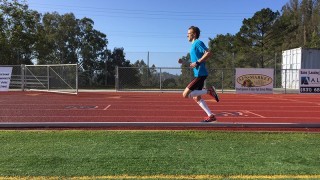
Brett Gotcher during a recent workout. Photo: Mario Fraioli
It’s just before 9 o’clock on a Wednesday morning in Aptos, Calif., exactly one month before the U.S. Olympic Trials Marathon, and Brett Gotcher, who holds a 2:10:36 personal best for the distance, is pulling a large piece of rubber padding from Lane 1 of his high school track so he can start his workout.
“The thing with the marathon,” explains the 31-year-old Gotcher, pausing between pulls. “is that if you make everything a little harder on yourself, even mentally, it’s only going to help you. Somedays, you just have to treat it like it’s a job.”
Now six years removed from that personal best (and the fourth-fastest American debut marathon in history), Gotcher hasn’t had it easy since the 2012 marathon trials in Houston, where he finished fifth in 2:11:09 in what was one of the fastest and deepest American-only marathons ever. Officially, Gotcher was the alternate for the U.S. team at the London Games, where both Ryan Hall and Abdi Abdirahman dropped out mid-race with injuries.
Gotcher continued his strong running throughout 2012. He finished third at the U.S. 20K championship that fall and was preparing to run the New York City Marathon in November—“I was really pretty amped up for that one,” Gotcher says—but the race was canceled because of Hurricane Sandy. A nagging neuroma issue that fall didn’t go away and led to other injury problems, setting off a string of inconsistent training and racing that’s plagued him for the better part of the past three years. His last full marathon was in Boston in 2014—he placed 18th in 2:17:16 the day Meb Keflezighi won in 2:08:37 and three other Americans broke 2:13.
Despite a series of setbacks, or perhaps because of them, Gotcher has put himself back together and believes he has what it takes to be in the mix when he takes his place on the starting line in Los Angeles on Feb. 13. A year ago, he ran a solid half marathon at the U.S. half marathon championships in Houston, where he placed eighth in 1:02:49, and just this past December he was 15th at the stacked U.S. Club Cross Country Championships in San Francisco, where he ran 29:47—less than 10 seconds out of the top 10.
“I feel pretty similar to how I did before I ran 2:10,” says Gotcher, who has been running up to 130 miles a week during his Trials buildup. “But I’m not as stuck on the numbers as I was a couple years ago, and I’d like to think I’ve gotten smarter.”
On this mild day in mid-January, Gotcher is running 12 one-mile repeats—the most he’s ever done in a single session—at an assigned pace of 4:50 to 4:55 with a one-lap jog recovery between each four-lap effort. Counting the warmup and cooldown, the session will total close to 20 miles. He’ll tack on another 4 miles in the early evening before calling it a day’s work. Despite being unsponsored since the end of 2014—Gotcher warmed up for his workout in a Nike top, adidas windpants and pair of Hoka One One Bondi 4s—running is Gotcher’s only real job at the moment, and one he’s taking very seriously.
“He’s gone through a lot over the years and he’s still doing what he loves,” says Jacob (Evans) Petralia, a high school and college teammate of Gotcher who joined him at the track. “You can’t say that about a lot of people.”
Since graduating from Stanford in 2007, Gotcher has been coached by Greg McMillan, first in Flagstaff, Ariz., as an original member of the now-defunct McMillan Elite training group, and now mostly from a distance. McMillan lives about 100 miles north of Gotcher in Mill Valley, and the two communicate regularly throughout the week, usually after big workouts and long runs. Gotcher credits his nine-year relationship with McMillan as one of the elements that continues to give him the confidence that his best marathon is still ahead of him.
“I trust him completely,” Gotcher says of McMillan. “I just do what he tells me and don’t think too much about it.”
McMillan says Gotcher is built—and bred—to be a marathoner, and responds really well to regular doses of high-end aerobic running and long steady state runs at or around marathon pace. In an effort to overcome the injury frustrations of recent years, McMillan says during this buildup they’ve been working on developing consistency—and the confidence that results from it—more than anything else.
“You have to be able to train,” McMillan emphasizes. “Some of the stuff he dealt with, like the neuroma, was out of our control. It takes a lot of treatment and experts to take care of those things and he’s done a good job. Brett’s confidence comes from his training. He doesn’t always kill every workout but he hasn’t had any workouts where he’s failed. That’s a good sign for the marathon. He’s had some [workouts] that have been the best he’s run. It’s the marathon, so you never know but it’s a good sign when you see those things.”
The current approach to training isn’t much different than the one McMillan initially took with Gotcher when the two first began working together during Gotcher’s first year as a post-collegiate athlete.
“A lot of what we had to do [when he first came out of college] was to rebuild his confidence, get him some consistency,” McMillan recalls. “At Stanford, he had three coaches in five years. He was very good in high school, but he kind of lost his mojo with all the coaching changes. For him, a lot of it was reconnecting with the athlete that was use to doing really well.”
Gotcher clearly rediscovered his mojo after college, nabbing a national 20K title in 2009 ahead of his sterling marathon debut a few months later—“That first one was great but I don’t think it went perfect by any means,” Gotcher admits—and both he and McMillan believe that he’s back on track to being the type of athlete who can once again compete amongst America’s top marathoners when the stakes are highest.
The unassuming Gotcher, who has been taking real estate courses online between his twice-daily runs, doesn’t mind that he’s been able to fly under the radar in recent years. He feels relaxed while training at home in La Selva Beach, a sleepy beach town of less than 2,500 residents in Santa Cruz County not far from where he grew up in Watsonville. Since returning there permanently from Flagstaff in 2012, he’s taking comfort in running on the same roads and trails he’s logged literally thousands of miles on since he first took up the sport.
His wife, Valerie Panzich, who he first dated in high school and married in 2014, often drives alongside him during long runs to provide fluids and encouragement. His parents help out in a variety of ways, while his agent, J.T. Service, who placed 45th at the 2008 U.S. Olympic Trials Marathon (2:21:12), and friend, Scott McConville, a former high school teammate who ran collegiately for UC-Santa Barbara, also run with him on occasion.
“Both our families are here,” Gotcher says with a smile. “There’s no hassle and I’ve got a ton of support, especially on my long runs.”
Late last October, Gotcher returned to his old high-altitude stomping grounds of Flagstaff for a month to kick off his Olympic Trials training block, running with former training partners Nick Arciniaga and Andrew Lemoncello, among others in the community of top-tier distance runners. “I felt like it set me up really good before I began ramping it up,” Gotcher explains. “It’s nice having guys to run with again and I’ve really benefitted from those 4- or 5-week stints.”
“He has no limits,” says Arciniaga, a 2:11 marathoner in his own right. “He is so much faster than I am in the 10K and half. He also puts in the huge amounts of work (for the marathon). He’s calm and cool and he’s got the mental fortitude to get him through workouts and keep him going. He has a purpose for everything he does and he goes out and does it.”
Since returning to sea level, Gotcher has been working on honing his speed and efficiency, doing a lot of work to get economical at 2:09 marathon pace—something McMillan says is really difficult to do at altitude—and putting himself in a position to be competitive in a strategic championship-style race.
“If you’re in 2:09 shape, you’ve got flexibility if people start throwing in surges at 4:45 pace,” McMillan explains. “If you’re in 2:12 shape, you don’t have room to move. He’s really chomping at the bit to get out there and do his thing and that’s great going into the Trials.”
As Gotcher circles the track for his 12th and final mile, he smoothy and subtly shifts gears, breaking his metronomic 73-second-per-lap for the first time all morning to finish in a cool 4:47. After changing out of his adidas Adios racing flats, he pulls the rubber padding back into place on Lane 1 and sets off on his cooldown.
“I’d like to think that if I can close it out, I can run 2:09 flat or just under or somewhere in that range,” Gotcher says. “If you run fast, everything gets so much easier.”
The post Resurgent Brett Gotcher Taking The Hard Road To U.S. Olympic Trials Marathon appeared first on Competitor.com.
Ryan Hall's Blog
- Ryan Hall's profile
- 21 followers



